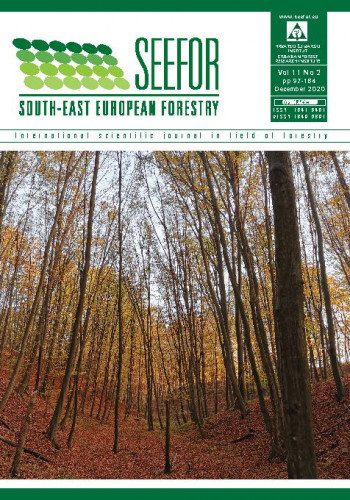In this paper, a change of diameter structure in a pre-maturing stand of black locust and common hackberry under the influence of a late thinning is analysed. The research is based on three permanent experimental plots and two measurements of diameters in a five-year period. One of the plots is a control plot and two plots are experimental, where the thinning was carried out in a stand 28-years old, with the thinning intensity of 28.9–30.6% of the initial density, approximately evenly distributed across diameter classes. In the investigated stand common hackberry came from the neighbouring areas in the stand structure. The initial measurement in the autumn of 2014 confirmed the share of common hackberry of 16–18% in the total number of trees thicker than 5 cm with a dominantly reversed J shape of the diameter structure and the presence of trees in all the diameter classes. In the period of stand age from 28 to 33 years, a dominant process on all treatments was the mortality of thinner trees, while the recruitment of common hackberry trees was recorded in all treatments. On the control plot, a quarter of the trees died, while an eighth of the remaining trees died in the thinned plots, mostly black locust trees. In thinned plots, only black locust trees died with a characteristic that the intensity of mortality was higher in thinner trees, while in the control plot some thick black locust trees died, as well as and some thinner common hackberry trees. In the five-year period, numerical parameters of variability (standard deviation, coefficient of variation), the shape of distributions (skewness and kurtosis) and heterogeneity of diameters at breast height (Gini index, Lorenz asymmetry coefficient) have shown a trend of increasing variability and change of diameter distributions of trees in all treatments, but it is more expressed in thinned plots compared to the control plots.
Sažetak

 South-east European forestry : SEEFOR : international scientific journal in field of forestry : 11,2(2020) / editor-in-chief Ivan Balenović.
South-east European forestry : SEEFOR : international scientific journal in field of forestry : 11,2(2020) / editor-in-chief Ivan Balenović.